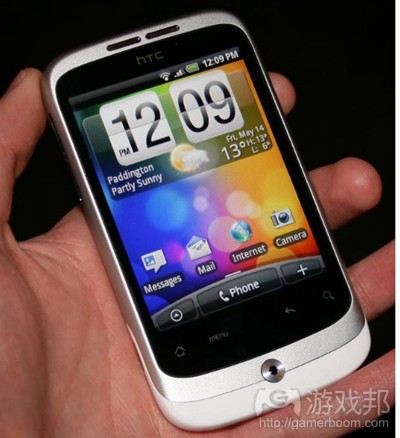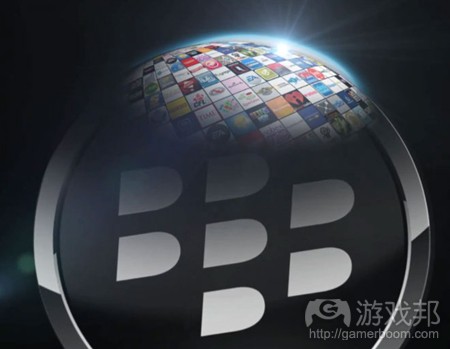每日观察:关注2016年手机应用营收或达520亿美元(2.8)
1)Juniper Research最近报告预测,2016年手机应用营收将达520亿美元(游戏邦注:该公司在2010年预测2015年手机应用营收将达320亿美元),2011年移动设备应用下载量已超过310亿次。
在所有应用营收中,平板电脑平台创收比例达7%,预计将在未来4年增长至25%左右。
2)TechNet报告指出,手机应用领域已为美国创造了46.6万个工作岗位,而2007年iPhone刚露面时的这一数据几乎为0。
截止2011年12月12日,苹果App Store拥有52万9550款活跃应用,聚集了12万4475名开发商;2011年手机应用市场产值(包括付费下载、IAP、虚拟商品交易等营收)已达200亿美元。
在全美各地区中,加州与应用相关工作岗位占比近25%,纽约和华盛顿则分别占比6.9%和6.4%。
3)Informa Telecoms & Media最近报告预测,200美元以下智能手机销量将从2012年的5%增长至2016年的24%,届时其销量将达2.06亿部,远超2010年的4100万部。
去年300美元以上智能手机发货量占比81%,预计这一比例将在2016年降到50%以下。
报告指出,Android、Symbian和黑莓是低端市场的主流手机平台,在2011年的市场份额分别为48.5%、38%和13.5%。除此之外,约三分之二的Symbian手机销量来自低价产品。
中国将成为最大的200美元以下智能手机市场,预计将在2016年占据全球五分之一的市场份额,居于其次的是印度,届时将占比14%;而此类低端智能手机在西欧和北美的市场份额将分别低于4%和3%。
4)RIM开发者关系副总裁Alec Saunders在最近的BlackBerry DevCon大会上指出,黑莓应用商店App World最近每日下载量已超过600万次,每月下载量达1.74亿次(总共已超过20亿次)
据其所称,App World目前收益比Android Market多40%以上,RIM应用生态系统盈利性仅次于iOS。App World日常下载量甚至还比iTunes App Store多43%,付费下载量也越过Android Market。有13%黑莓开发者已通过App World创收10万美元以上。
5)据insidemobileapps报道,苹果近日警告开发者勿使用“保送”应用排名第三方广告服务,否则可能丧失开发iOS应用的资格。
据称GTekna和AppMagenta等公司就是该类服务供应商代表,前者曾表示可在1天半到2天时间内,通过“合作伙伴网站”的“条幅广告”助开发者实现至少6万次下载量,并以此晋升至App Store排行榜前25名之列。但有一名开发者表示,他们试用该服务后虽然收获上万次下载量,但并未收获多少活跃用户。而由于App Store市场竞争加剧,此类服务供应商的“保送”要价也在过去半年从原来的5000美元上涨至1.5万美元。在苹果于2011年4月份取缔所谓的“奖励安装”下载行为时,此类服务供应商更是大获其益。
有一位匿名开发者最近在Touch Arcade发贴声称,有家此类营销公司找上门承诺仅需5000美元可助应用跻身排行榜前25名,其客户包括TinyCo、Mindjolt SGN、Funzio和Crowdstar。该营销公司还告诉这名开发者,苹果已经知道这种情况,所以他们现在仅收费5000美元(过去的价格更高),以便在苹果采取制裁措施之前获得更多客户。这名开发者称他无法理解为何苹果已经知情,却仍默许8款采用该服务的应用出现于App Store榜单前列。
但这里所提及的开发商均对此表示沉默,只有Crowdstar表示自己使用过包括iAd、Chartboost和Flurry在内的30多种服务,他们希望这些公司没有采用非法手段操纵应用排名情况。
令人奇怪的是,至少有一名开发者反映,他们已经在数月前向一名苹果App Store高管投诉这种情况,但苹果在知情后却没有什么动静。
6)据CBS News报道,苹果近日获批一项于2006年5月提交的专利申请,该专利名称是Digital Media Acquisition Using Credit,其内容描述包括:
*为媒介物品加上公司或商店积分等形式的价格
*决定用户是否可使用积分购买某物品
*定义用户所在国家是否支持该交易
*处理交易
观察者认为从以上描述来看,其功能与Facebook Credit十分相似,苹果的这项新专利很可能给Facebook带来威胁。但这并非苹果有意而为之,因为前者早在Facebook尚未成名时就已提交该专利申请。但这究竟会不会导致专利纠纷,就要取决于法院是否将虚拟奶牛和Farm Cash等物品视为该专利所描述的“媒介物品”。
7)独立开发商Nimblebit创始人Ian Marsh最近通过Twitter宣布,《Tiny Tower》在iOS平台下载量已超过1000万次。
从该游戏于2011年6月登陆iOS平台的时间来算,其每月平均下载量约125万次。据称《Tiny Tower》在今年1月时达到100万DAU,玩家每天体验游戏共达1000万次。
8)Glu Mobile最近宣布2011年第四季度公司智能手机业务营收同比去年增加3倍,达到1010万美元;公司有三分之二营收来自智能手机业务,而一年前其智能手机业务营收仅占五分之一。
Glu游戏目前DAU已达290万,超过上一季度的210万,MAU则从上一季度的2210万增长至3140万。第四季度IAP营收从原来的86.6万美元增长至152万美元,但每笔IAP平均交易额已从6.4美元下降至5.79美元(因为Glu推出促销优惠以提升总体销量)。
第四季度在Android平台营收增长至430万美元,但在Glu总体销售额中仅占比29%。尽管人们认为第四季度苹果发布iPhone 4S以及圣诞节等因素有助于大力提升开发商盈利性,但Glu在该季度智能手机业务营收仅比上一季度增长40万美元,Glu仍需经历一年时间方能真正赢利。
据称iOS游戏市场竞争日趋激烈,目前开发商要进入美国免费应用排行榜前25名,至少需要实现10万次下载量,而之前仅需10万次下载量就足以进入前10名。
Glu动作冒险游戏《Gun Bros》自2010年发布以来已创收790万美元,在第四季度收益为140万美元,上一季度创收150万美元;《Contract Killer》创收190万美元,《Bug Village》创收70万美元,而《Eternity Warriors》则是100万美元。(本文为游戏邦/gamerboom.com编译,拒绝任何不保留版权的转载,如需转载请联系:游戏邦)
1)Consumer mobile app revs to hit $52bn by 2016
by Zen Terrelonge
Driven by continued smartphone and tablet adoption.
In 2010, UK-based Juniper Research said mobile app revenues would hit $32 billion by 2015. Now, the firm says app revenues will hit $52 billion by 2016, just one year later, which shows the drastic change the market has had from the smartphone and tablet boom.
More that than 31 billion apps were downloaded to mobile devices in 2011, and revenues were boosted as the likes of Android Market and Ovi Store launched operator billing formats, according to the report.
Additionally, the rise of in-app billing and purchases being used led post-download revenues to pass pay-per-download options.
Results show that tablets currently occupy seven per cent of app revenues, which is set to increase to a quarter of all revenues within the next four years.
Companies have begun using HTML5 to create web browser-based apps, the likes which have been developed by The Financial Times, and this is set to change the perks of using native apps.(source:mobile-ent)
2)US mobile app market has created almost 500,000 jobs
by Zen Terrelonge
Earlier today, we reported mobile app revenues are expected to reach $52 billion in 2016. Now, CEO network TechNet says the mobile app industry in America is responsible for providing 466,000 jobs, which was at zero in 2007, which is also the year the first iPhone was launched.
The report highlights Apple’s App Store as the pioneer for apps, saying the platform didn’t truly exist until the iPhone came into existence. Apple had 529,550 active apps by December 12th, 2011, which were uploaded by 124,475 developers.
The app market generated $20 billion in 2011, which was made up of downloads, in-app revenues, virtual goods and services.
California, the home of Silicon Valley, has been ranked as the number one state for app-based jobs, securing almost 25 per cent. Meanwhile, New York and Washington came in second and third place, with 6.9 per cent and 6.4 per cent respectively, according to the report.
Dr. Michael Mandel, TechNet, says: “How big can the App Economy get? That depends in many ways on the future of wireless and social networks. If wireless and social network platforms continue to grow, then we can expect the App Economy to grow along with them.”(source:mobile-ent)
3)Low-end smartphone sales to hit 206m in 2016
by Zen Terrelonge
Yesterday, we reported cheap smartphone manufacturers ZTE and Huawei are set to move into the high-end market this year to focus on profits.
However, Informa Telecoms & Media says sub-$200 smartphone sales are poised to grow from five per cent in 2012 to 24 per cent in 2016, when sales reach 206 million devices, up from 41 million in 2010.
Last year, 81 per cent of smartphones shipped were priced above $300, which is set to fall below 50 per cent in 2016, according to the report.
Malik Saadi, principal analyst at Informa Telecoms & Media, said: “As economies of scale build, smartphones will progressively migrate to lower price points.
“Devices priced between $200-300 will particularly be attractive to operators because they enable the democratisation of mobile internet while being very easy to subsidise. This segment will be the fastest growing part of the smartphone market within the next five years.”
The report says Android, Symbian and BlackBerry are the only platforms catering to the low end market, with respective 2011 market shares of 48.5 per cent, 38 per cent and 13.5 per cent.
Additionally, almost two-thirds of Symbian’s total sales in 2011 were generated by the low end price range.
During the smartphone market’s ‘second phase’ of development, operators are expected to concentrate on the mass market with value devices. This will enable them to influence consumer’s user experience, and Android is thought to be the best option for operators to achieve that.
Saadi continued, saying: “Sales of these devices will be challenged by the more-optimised smarter feature phones that will increasingly offer a decent Internet experience at lower price points. A number of device vendors and chipset manufacturers are now busy integrating key applications such as particular mobile browsers and Web search engines, YouTube, Facebook, Angry Birds into their hardware.
“Their aim is to bring key internet applications to below $100 market. The ultra-low-cost smartphone market is not expected to mature before 2014 and annual sales of these devices are not expected to exceed 60 million units any time before 2016.”
China is predicted to be the largest market for sub-$200 smartphones, with a market share of one fifth of the global total in 2016, while India will be the second-largest single market for these phones with 14 per cent.
As for sales of the device in Western Europe and North America, the shares of these regions are not expected to exceed four per cent and three per cent, respectively.(source:mobile-ent)
4)BlackBerry App World more profitable than Android, says RIM
Devindra Hardawar
Showing that it’s not quite dead yet, Research in Motion aimed to “bust a few myths” about its BlackBerry app ecosystem at the company’s Europe BlackBerry DevCon today.
RIM VP of developer relations Alec Saunders pointed out that the company is now seeing over 6 million daily App World downloads, reaching 174 million per month (and over two billion downloads in total). But most importantly, Saunders wanted to dispel the notion that developing for BlackBerry isn’t profitable, the Verge reports.
Saunders said that the App World generates 40 percent more revenue than the Android Market, which makes RIM’s app ecosystem the second-most profitable behind iOS. He cited data that suggests the App World gets 43 percent more daily downloads than the iTunes App Store, as well as more paid downloads than the Android Market. 13 percent of BlackBerry developers have made over $100,000 from RIM’s App World, Saunders said.
Until we get access to the data Saunders is referring to, we’ll have to take his word for it. But I wouldn’t be too surprised if BlackBerry’s app platform is generating more money than Android now. BlackBerry users who’ve stuck with the platform so far likely wouldn’t mind paying money for apps, and from what I’ve seen the App World is filled with far less junk than the Android Market.
While it’s nice to hear that RIM’s app business is doing well, the real task for the company will be to keep it up until its long-awaited BlackBerry 10 devices arrive at the end of the year. 2012 is going to be a tough year for RIM, so I suppose the company is better off touting its current successes while it can.(source:venturebeat)
5)Apple may be finally cracking down on bots after warning to developers
Apple issued a warning to developers last night reminding them that using third-party advertising services guaranteeing top rankings could result in the loss of their developer membership.
In a note entitled, “Adhering to Guidelines on Third-Party Marketing Services” last night, Apple reiterated:
“Once you build a great app, you want everyone to know about it. However, when you promote your app, you should avoid using services that advertise or guarantee top placement in App Store charts. Even if you are not personally engaged in manipulating App Store chart rankings or user reviews, employing services that do so on your behalf may result in the loss of your Apple Developer Program membership. Get helpful tips and resources on marketing your apps the right way from the App Store Resource Center.”
It looks like the company is finally cracking down on bots or companies that use fraudulent iTunes accounts to download apps thousands of times to boost developer rankings. We’ve heard complaints about these companies for several months but have never been able to definitively prove their tactics. Most individual developers deny using them when asked.
The names of alleged bot farms that come up most commonly are GTekna and AppMagenta, but they never responded to any of our multiple inquiries over the past few months. We could not definitively prove what they did. GTekna claims it can get developers into the Top 25 in 1.5 to 2 days with at least 60,000 downloads through “banner ads” on “partner websites.” But one developer who ran a test claimed their app received no active usage from the thousands of downloads they got from the company. We had heard that they had also raised rates from $5,000 to $15,000 over the past half year as competition increased in the store. These services also benefited with extra business after Apple clamped down on incentivized installs back in April.
The bot issue resurfaced this week after a developer posted on Touch Arcade that one of these marketing services approached him and promised Top 25 ranking for $5,000. The marketing representative said his company worked with TinyCo, Mindjolt SGN, Funzio and Crowdstar (see below).
When the developer asked for more, the marketing representative explained how his company worked:
“I was totally SHOCKED when I heard that there were 8 apps on the Top 25 Free App store that were all promoted by them. At this point, I was pretty curious on how he’s able to do that (I was told by an AdMob sales person before that it takes a lot of money and traffic to promote an app to the Top 10). That’s when he let loose the BIGGEST FRAUD ever, he said he had outsourced someone to build him a bot farm and the bots will automatically download his clients’ apps and drive up their rankings!!! He even told me that even though I might see my app climb up the app store, they aren’t “REAL” at first until it gets to the top and that’s when REAL HUMAN players will start seeing my app and play it.
This was getting quite crazy, on one hand, I really wanted downloads for my new app, but at the same time, this sounds like a HUGE FRAUD. I told the guy that I’ll need to think more about it, but he then warned me that Apple already KNEWof this issue and has already taken action and banned a developer called Dream Cortex recently for botting. He said that’s why he’s charging me only $5000, it would have been more expensive before, but he’s trying to get as many clients as possible before Apple stop the botting.
It’s really disheartening to know that Apple is aware of this issue, but yet, they still allow these 8 apps on the app store to use bots. For all these time that I’ve been working hard at developing my app, I am very disappointed to know that these 8 other apps are getting insane exposure on the app store by paying a mere $5000.
This really needed to be looked into. I will be honest to everyone that I did considered paying that $5000 at one point, but I decided not to because deep down I really love developing apps on this platform and it saddens me to know that’s the way to be successful on the App Store.”
We’ve reached out to all of the developers alleged to have been involved for comment. But take note that all of their games still seem to be in the store at this time.
Crowdstar says that it uses more than 30 companies to acquire users including iAd, Chartboost and Flurry. “Ad networks keep their ad partner information confidential, but we hope that none of the partners ever use farms or bots,” the company said.
The weird thing is at least one developer told us that they actually personally complained to Apple about the existence of these bots to a very senior app store representative months ago, but Apple didn’t do anything about it.
The biggest question seems to be — what took so long?(source:insidemobileapps)
6)Apple’s patent hammer could crush Facebook’s gaming empire
by Joe Osborne
Facebook needs social games, and social games need Facebook. The multibillion dollar company’s recent filing for initial public offering shows that. Thanks to Facebooks’ 30 percent cut of all transactions in games using Facebook Credits (um, all of them), the company made $445 million from Zynga’s games alone in 2011. According to CBS News, Apple is poised to ruin the fun.
The iPhone pusher was granted a patent today that it applied for way back in May 2006, titled Digital Media Acquisition Using Credit, and it stands directly in opposition of the social network’s Facebook Credits system. While we highly suggest you check out the patent in full, what it basically covers is a system that does this, as per CBS News:
•associate media items with a price in company or store credits
•determine whether a given item is available for a credit purchase
•identify the country in which a given user is in case there is a limitation on selling to that country
•perform the transaction
That sounds quite a lot how Facebook Credits works, no? Facebook’s future reliance on Facebook Credits, especially in the social games space in which some players spend thousands every year, is why Apple’s new patent is so threatening. Now, it’s impossible that Apple filed this patent in hopes of blocking Facebook, since it was filed when the social network was still exclusive to colleges.
This possibility rests solely on whether a court would deem things like digital cows and Farm Cash as “media items,” as they’re described within the patent. And if worse comes to worst, this could be bad news for Facebook as far as games are concerned. And remember, Apple is definitely not afraid to swing the patent hammer.(source:games)
7)NimbleBit’s Tiny Tower tops 10 million downloads on iOS
by Keith Andrew
It’s easy to forget that, before the launch of Zynga’s Dream Heights – and all the fallout that resulted – almost all of the press attention focused on NimbleBit’s Tiny Tower simply detailed how well the title was doing.
Indeed, in the midst of the studio’s tussle with Zynga, it’s pleasing to report that Tiny Tower is still ticking over nicely, with the studio announcing the game has just passed 10 million downloads on iOS.
Virtual goods
In celebration, NimbleBit co-founder has revealed the studio is in the process of a virtual currency giveaway.
“To celebrate Tiny Tower reaching 10 million iOS downloads we’re giving away over 10 million Tower Bux to players,” said Marsh in a tweet. “Log in today.”
Given Tiny Tower launched on iOS in June, that means the game is clocking up an average of around 1.25 million downloads a month.
Back in January, NimbleBit claimed the game was attracting 1 million daily active users, all amassing a total of 10 million play sessions a day.(source:pocketgamer)
8)Glu Mobile’s smartphone revenues more than triple to $10.1M in the fourth quarter
Kim-Mai Cutler
It’s been a rough ride for Glu Mobile over the last few years. But it looks like the company revenues are just holding steady as smartphone revenues compensate for the declines in Glu’s old feature phone business. That suggests it may be able to cross over into profitability next year.
Glu’s smartphone revenues tripled year-over-year to $10.1 million, meaning the company now makes about two-thirds of its revenues from iOS and Android. A year ago, just one-fifth of Glu’s revenues came from smartphones, showing that the company is managing the transition to iOS and Android. Shares rallied on the news, climbing 6.1 percent in after-hours trading to $4.19.
Glu grew daily active users to 2.9 million from 2.1 million in the previous quarter, while monthly active users went from 22.1 million to 31.4 million. (Zynga, for comparison, said it had 13 million daily active users on mobile devices in December.) The number of in-app purchases rose to 1.52 million in the fourth quarter from 866,000 in the previous one. The average purchase size declined to $5.79 from $6.40 as Glu used discounts to boost overall volume.
Android revenue grew to $4.3 million in the fourth quarter, but its share of Glu’s total sales fell to 29 percent. That mirrors the trend we saw with Apple’s remarkable $46.3 billion quarter boosting the entire iOS ecosystem relative to Android.
That said, it looks like near-term growth is slowing and Glu is still at least a year away from being profitable. Glu grew smartphone revenues by just $400,000 over the previous quarter in what was supposed to be one of the most lucrative periods of the year for developers given the iPhone 4S launch and the holidays.
The market is just becoming more competitive as we’re now hearing that it’s now taking around 100,000 downloads to break into the top 25 free apps in the U.S. Previously, developers only needed to break the 100,000 mark if they wanted placement in the top 10. (Apple also warned developers not to game rankings this month.)
“The periods of time in which games retain their peak revenue is shortening,” noted chief executive Niccolo de Masi. The other key point to remember is that Glu’s growth in the first half of the year was also enhanced by offer wall revenues, a strategy which is no longer viable because Apple clamped down on these practices back in April.
Even as churn continues to push titles in and out of the top quickly, a few of Glu’s brands seem to have staying power. The action-adventure game Gun Bros has earned $7.9 million since its launch in 2010. In the fourth quarter, it earned $1.4 million, only slightly down from the $1.5 million it earned the previous quarter. Another stalwart, Contract Killer, brought in $1.9 million. Bug Village brought in $700,000 while Eternity Warriors earned $1 million.
Overall, Glu Mobile doesn’t expect to be profitable until after this year when it breaks even on an adjusted EBITDA (earnings before interest, taxes, depreciation, and amortization) in the fourth quarter of this year. The company widened its annual loss to $21.2 million compared to $11.4 million the year before because it made a big bet through the acquisitions of Griptonite and Blammo Games in the middle of the year. The net loss for the fourth quarter was $10 million.
However, the picture could change as Blammo just published its first game Stardom and Glu expects that Griptonite will start producing titles by March. The Griptonite deal also brought $10 million in cash on the studio’s balance sheet to Glu. Glu will end the year with $32.2 million in cash on its balance sheet, up from $12.9 million the year before.
Glu says smartphones revenues (on non-generally accepted accounting principles or Non-GAAP) will come in at between $14 and 15 million this quarter. For the year, smartphone revenues should make up between 83 and 95 percent of the company’s total Non-GAAP revenues. Glu says it expects Non-GAAP smartphone revenues to come in between $71.0 million and $75.0 million for the full year.(source:insidemobileapps)














































 闽公网安备35020302001549号
闽公网安备35020302001549号